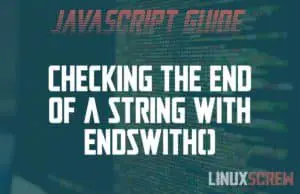Home »
The endsWith() Method for JavaScript Strings, with Examples
The endsWith() String method in JavaScript will determine whether a string ends with a certain string or character. Here’s how to use it, with examples. endsWith() Method JavaScript Syntax The endsWith() method can be called from any String variable. string.endsWith(SEARCH, LENGTH) Note that: string can be any string value or variable SEARCH should be the string which you want to check if string ends with LENGTH is OPTIONAL If specified, LENGTH will be used as the length of the STRING being checked If it is less than the actual length of string, the rest of the string beyond LENGTH will be ignored This can be … Read more

